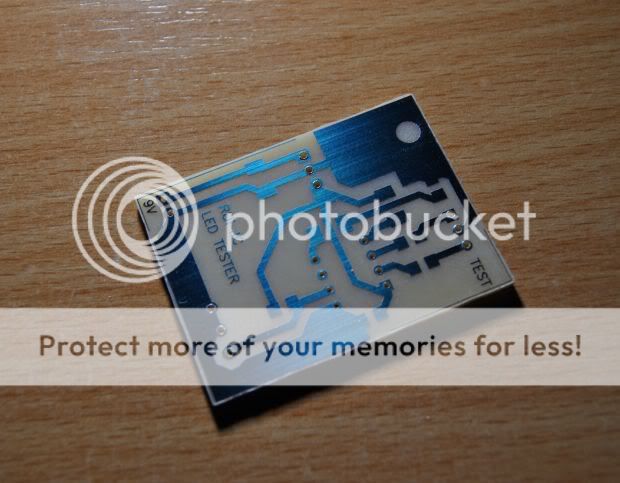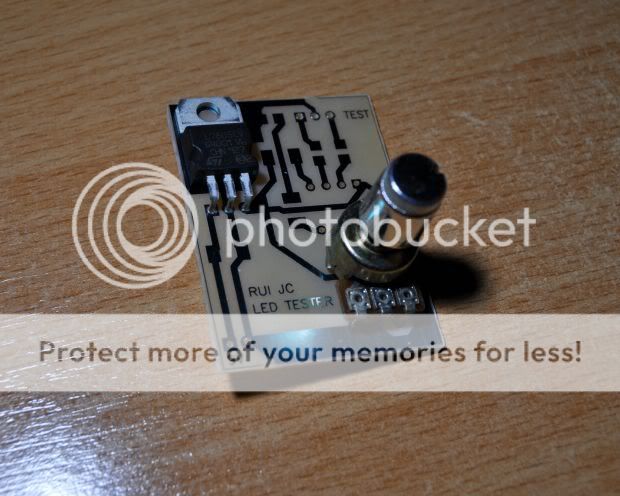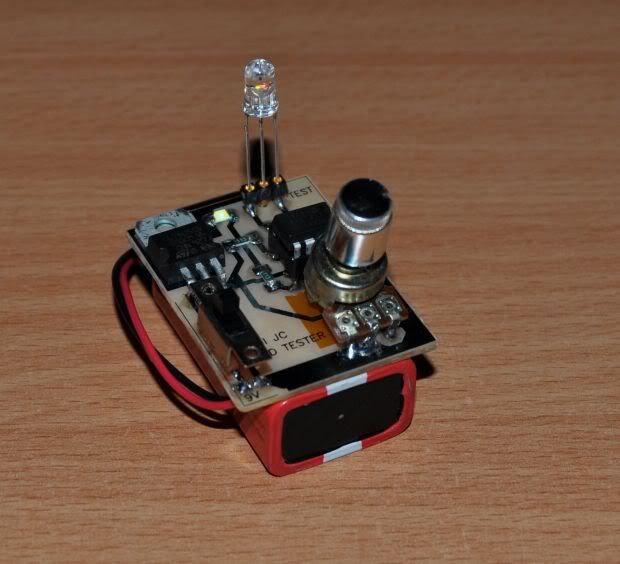![]() Depois de umas semanas sem tempo disponivel para novos projectos, apresento agora um testador de leds com regulação de intensidade.
Depois de umas semanas sem tempo disponivel para novos projectos, apresento agora um testador de leds com regulação de intensidade.
De tempos a tempos preciso de testar os leds que vou usar e costumava ter umas pilhas com uma resistência pendurada para ligar os leds e testá-los.
Esta não é de maneira nenhuma a melhor opção para ter numa bancada.
Decidi então fazer este testador para ter na bancada para testar os leds e com opção para escolher a intensidade e que dá para ligar leds bi-color.
![]() After some weeks without any free time for new projects, i give you my new led tester with brightness control.
After some weeks without any free time for new projects, i give you my new led tester with brightness control.
From time to time i need to test some leds and before i had a battery with a resistor hanging on to teste them.
This is by far the worst solution to have on my workbench.
Therefore i decided to make this led tester to include in my workbench's tools and it is capable of changing the brightness and connect bicolor leds.

Esta é a PCB que fiz. Um dos requisitos era que ficasse com o mesmo tamanho de uma pilha de 9V ( em altura ).
This is the PCB i've made. One of the requirements was that it's size had to be the same as a 9V battery ( in height ).

O potenciometro foi recuperado de um aparelho avariado... e serviu á medida !
Uma coisa que faltou no desenho original foi a furação para um interruptor. Nada grave, bastou fazer os furos por cima da pista e soldar o interruptor.
The potentiometer was salvaged from a broken apliance... and it works like a charm !
One thing that was missing from the original design was the marking for a power switch. Nothing serious, i just drilled some holes over the power track and soldered the switch.

O conector de 3 pinos tem o pino central ligado á massa. O pino da esquerda tem controle de intensidade e o da direita é de intensidade fixa.
Colocando o led do lado esquerdo do conector, pode-se testar o led e variar a intensidade rodando o potenciometro.
The 3 pin connector has it's middle connection to ground. The left pin controls the brightness and the right one is fixed with full brightness.
By placing the led on the left side it's possible to test the led and change it's brightness by rotating the potentiometer.

Para leds bi-color ( e sendo o comum a massa ), uma das cores fica sempre com intensidade fixa e a outra variavel.
O led SMD garante que o circuito está a funcionar, pois podemos apanhar um led avariado e ficar na duvida.
For bicolor leds ( must be a common ground one ), one of the colors will be always with high brightness while the other color will be brightness controlled.
The SMD led built in ensures that the circuit is turned on and it's woking in case we get to test a faulty led.

